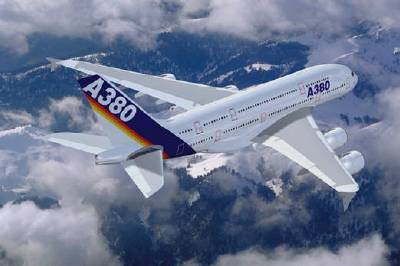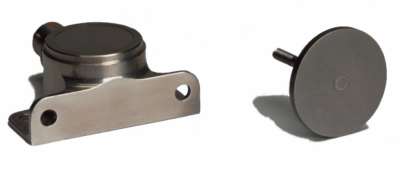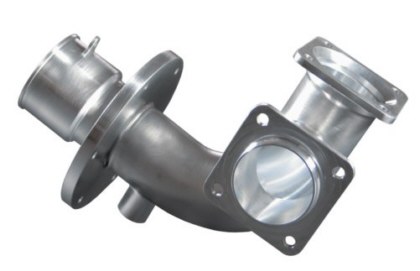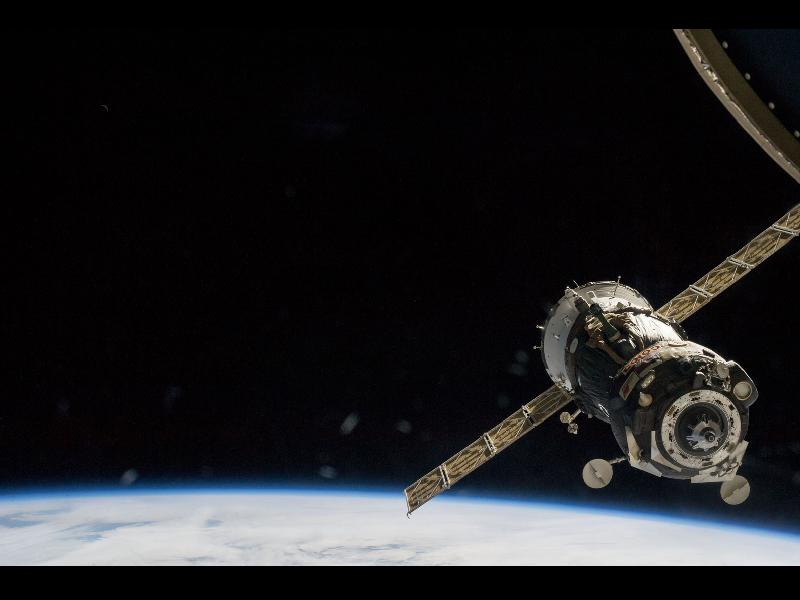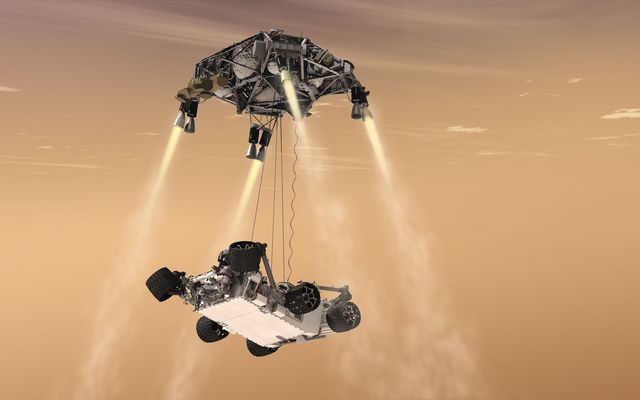 Employing more than 150,000 people and exporting around 60% of its output, the UK’s aerospace industry is the second largest in the world and is responsible for 9.5% of the UK’s total research and development (2001). In 2001, the national turnover was over £18bn and, in terms of value added business, it is second only to the United States. A recent DTI study highlighted aerospace as the UK’s most globally competitive industry – a key measure of its global success being its penetration of the US market. For instance, 60% of all the US’s aerospace subsystems imports are British. It is a high-skills industry, with wages 20% higher than the manufacturing average. With total world-class capabilities, strength in manufacture and research, and initiatives to maintain and improve its competitive edge, aerospace is a key sector in the UK economy and a major player in the global market.
Employing more than 150,000 people and exporting around 60% of its output, the UK’s aerospace industry is the second largest in the world and is responsible for 9.5% of the UK’s total research and development (2001). In 2001, the national turnover was over £18bn and, in terms of value added business, it is second only to the United States. A recent DTI study highlighted aerospace as the UK’s most globally competitive industry – a key measure of its global success being its penetration of the US market. For instance, 60% of all the US’s aerospace subsystems imports are British. It is a high-skills industry, with wages 20% higher than the manufacturing average. With total world-class capabilities, strength in manufacture and research, and initiatives to maintain and improve its competitive edge, aerospace is a key sector in the UK economy and a major player in the global market.
The future of air transport is the ‘super-jumbo’, capable of flying 550-plus passengers and their luggage from London to Singapore , non-stop – more economically, and with fewer emissions than any competitor. This aircraft, the A380, is being built by the European company Airbus, and the wing design and manufacture defines the cutting edge of British-led technological achievement.
Airbus is an astonishing success story. In little more than the average lifespan of a commercial jet, the company now meets its sole remaining competitor head-to-head, and often wins; some 185 customers around the world operate Airbus aircraft, and – according to the company – one of its 3,000 aircraft takes off or lands, somewhere around the world, every four seconds around the clock.
International Cooperation
It’s a success story, too, for cross-border cooperation. The parent company is headquartered in Toulouse, France, and operates under French law. It is 80 per cent owned by EADS (the result of a merger between Aerospatiale Matra SA of France, DaimlerChrysler Aerospace AG of Germany, and Construcciones Aeronauticas SA of Spain), and 20 per cent by Britain’s BAE SYSTEMS. The company was first incorporated as recently as 2001; before that time it operated – and had done since 1970 – as a marketing, sales, and customer support consortium known as Airbus Industrie. British Aerospace joined as a full partner in 1979.
The company now centres its design, component manufacture, and assembly at 16 sites belonging to wholly owned subsidiaries in France, Spain, Germany, and the UK. In general terms, France produces the nose, flight deck, flying control systems and centre fuselage; Germany the fuselage sections and tailfin; Spain the horizontal tailfin; and the UK the wings and fuel system. It’s a form of specialisation that allows – encourages – the creation of centres of excellence, without needless duplication, and which helps to ensure competitive costs in the intensely competitive world market for commercial aircraft.
Airbus’s Two UK Centres
The two principal Airbus centres in the UK, each employing around 5,500 people, are at Filton near Bristol, and Broughton in North Wales. Filton has manufactured aircraft for almost 100 years, including the entire British-built Concorde fleet. Today the site houses Airbus’, wing design engineering, research and development, component manufacturing, and some wing sub-assembly. It also manages world-wide strategic procurement for wings and landing-gear. Broughton’s core competencies today include long bed machining, wing skin sub-assembly, and wing assembly and equipping for the entire Airbus family of jets, and assembly of the Raytheon Hawker family of executive aircraft.
The Wing Makers as Kings of Flight
Arguably, the wing makers are the kings of flight. No matter what else is done, what innovations are introduced, or technologies discovered and deployed in any area of the aircraft, the wing defines the aircraft. Both sites are forever pushing the frontiers of quality design and manufacture, enabling bigger aircraft with ever greater capacity to be built through increasing the efficiency of the wing, without compromising the aircraft’s viability to operate in the world’s key markets.
New technologies for manufacture, and new production techniques too, have been benchmarked and developed, and are coming on stream and proving their worth at Broughton, for example, for the company’s single aisle jets, Airbus has recently introduced the concept of a moving assembly line after benchmarking with the Nissan car plant in Sunderland. Other tools for work balancing have been learned from Toyota. Many other techniques and technologies have been developed in-house.
Challenges of the ‘Super Jumbo’
But the greatest opportunities – and the greatest challenges – come with new aircraft and, across Airbus, the focus now is on the A380, the wide bodied, double-decker ‘super-jumbo’ on which the company is pinning its hopes and plans for the future.
The A380, when it enters service in 2006, will be the largest passenger aircraft in the world and has been designed to meet an anticipated doubling of air transport demand in the next 15 years, and trebling in the next 22. Air cargo demand is set to rise even faster. The A380 is designed to carry more passengers or freight, further, more economically and with reduced emissions than the existing standard, the 747 ‘jumbos’. And it will be capable of operating with significantly less noise, and using less fuel than the 747s.
It’s not hard to see the attraction, for both passenger and freight operators, and this is borne out by advance orders; eleven major airlines and leasing companies have ordered 129 aircraft to date, with Singapore Airlines scheduled to receive the first aircraft in 2006.
The Wing – Facts and Figures
The wing will be the largest ever produced for a civil airliner, at 17.7 metres from front to back where it meets the fuselage, and 36.3 metres from fuselage to wingtip – though being swept back, it’s longer than this; the maximum length of metal in a single wing is 46 metres. The root of the wing – where it meets the fuselage – will have the internal height of an average domestic ceiling. The result will be an aircraft with a tip-to-tip wingspan of 79.8 metres – just inside the critical 80m measure that forms a practical working standard and means it will ‘fit’ existing runways, taxiways, and embarkation bridges.
Each wing has a surface area of 845 square metres – enough space for a good-sized building plot. It comprises approximately 25,500 different components from 52 major first-tier suppliers, over half of whom are UK based. Components also come from the Filton site, where metallic ribs are manufactured and the trailing edge of the wing assembled.
Each pair of wings is made up of:
- 20 aluminium alloy panels or ‘skins’
- 124 ribs, 76 of which are metallic, and 48 made of carbon composite materials
- 6 aluminium alloy spars
- 314 wing stringers or stiffeners; 124 for the top wing skins, 190 for the bottom skins
- 16 leading ‘edge’, 6 trailing edge devices and 22 flying control surfaces
- 360,000 metres of wiring, piping and ducting to control the hydraulics and in turn the flaps, slats, spoilers and ailerons
- 750,000 fasteners (nuts, bolts and rivets).
The Wing – Design and Build
The challenging requirements have called for technological innovations in every area of the wings’ design and build, and a level of international collaboration that extends way beyond the Airbus wing design teams at Filton, and the other wing design offices in Bremen, Germany, Toulouse, France and Kansas, USA. Hundreds of companies are partnering Airbus on designing and manufacturing components for the wings with 12 – from Europe, Japan, and the USA, as well as the UK – working as full risk-sharing partners. It is truly an international effort, demanding technological innovation in both product and process, led by the British wing team.
The size and scale of the wing inevitably has led to challenges, but also opportunities. In order to meet the economic and environmental requirements, innovation has been required in virtually all areas of design: aerodynamics, structures, systems and design processes.
 For example, engineers made extensive use of a software design process called KBE – Knowledge Based Engineering – which by capturing design knowledge and data speeded up the design process by around 40 per cent.. This process was applied to many different areas ranging from designing the optimum structure of the wing to the detailed design of individual component features. KBE facilitated the production of many hundreds of thousands more iterations; such methods have helped engineers design the most aerodynamic wing possible within the confines of a 80 metre box.
For example, engineers made extensive use of a software design process called KBE – Knowledge Based Engineering – which by capturing design knowledge and data speeded up the design process by around 40 per cent.. This process was applied to many different areas ranging from designing the optimum structure of the wing to the detailed design of individual component features. KBE facilitated the production of many hundreds of thousands more iterations; such methods have helped engineers design the most aerodynamic wing possible within the confines of a 80 metre box.
A rapid prototyping wind tunnel test process was developed which enabled many more design solutions to be tested. This rapid prototyping utilised a process called stereolithography in which a computer controlled laser is fired into a vat of liquid resin which then solidifies, resulting in a solid representation of the 3D computer geometry.
All design work runs parallel with continuing research into new materials, and the innovative use of existing materials for new or different applications, to maintain or increase structural strength without increasing weight disproportionately. The A380 wing is using new materials for virtually every component and has a new structural layout, containing air generation units within the wing, for example – a new challenge for designers. Other ‘firsts’ have been the use of composite wing ribs, which have significantly reduced weight, and, the addition of a ‘droop nose’; a movable high-lift device that has replaced the more common slat system on the inboard leading edge of the wing. The main advantage of this device the droop nose is a lower take-off drag than for a slat of comparable size, leading to an increase in the ratio between lift and drag. This will enable A380 to achieve a steeper climb gradient, helping to reduce noise on take-off and landing.
Working on the Components
 Airbus has invested hundreds of millions of pounds in new buildings and facilities at Broughton to accommodate the wing manufacturing and assembly work. A new 22,000 sq.m building, the Stringer Manufacturing Centre is producing the bottom wing skin stringers (longitudinal stiffeners which strengthen wing skins) for the A380, and other Airbus models.
Airbus has invested hundreds of millions of pounds in new buildings and facilities at Broughton to accommodate the wing manufacturing and assembly work. A new 22,000 sq.m building, the Stringer Manufacturing Centre is producing the bottom wing skin stringers (longitudinal stiffeners which strengthen wing skins) for the A380, and other Airbus models.
The scale of the task was such that they could not be absorbed into existing premises. The new facility can produce up to 200 km of stringers per year in an automated machining cell, which after forming are collated into complete ‘panel sets’ suspended in webbing, ready for attaching straight to the wing skins.
A 12,000 sq.m Skin Manufacturing Centre comprises two extensions to the previously existing Treatments Facility. Here 18 out of the 20 different aluminium alloy panels that form the eternal ‘skin’ of the wings for A380 are produced. The process for profiling the wing skin with ‘facet’ milling – used until now – has been replaced by ‘strip process’ milling.
This results in lower weight and simpler tooling for attaching the stringer. When milled, the skin varies in thickness between 6mm and 28mm and the largest single panel for milling is 35 metres long. All panels are machined at floor level, which together with a new system for vacuuming shards of sharp aluminium makes the job safer and more efficient.
Creep Forming the Wing Curvature
The key to the aerodynamic performance of a wing is its curvature – and this is achieved on A380 through ‘creep forming’, which uses heat to stress the material to be formed – in this case high strength, age hardenable aluminium alloy; in the process it can be brought to a new, consistent, predetermined shape.
 Eight of the ten top wing panels in an individual aircraft’s wingset – are formed in this way. They are placed onto an individual template, different for each panel, and vacuum packed to hold them in place. Then they go into an autoclave – believed to be the biggest in Europe – to be baked in a temperature-critical environment for 24 hours, under 8.5 bars pressure. Once removed, the wing panels spring back to exactly the required curvature.
Eight of the ten top wing panels in an individual aircraft’s wingset – are formed in this way. They are placed onto an individual template, different for each panel, and vacuum packed to hold them in place. Then they go into an autoclave – believed to be the biggest in Europe – to be baked in a temperature-critical environment for 24 hours, under 8.5 bars pressure. Once removed, the wing panels spring back to exactly the required curvature.
The autoclave was custom-designed, custom-built – and patented – as pre-existing processes could not have maintained the precise temperatures required. The 300 tonne, 42 metre long, 6 metre diameter, oven contains nine individually controlled heating units along its length, designed and controlled to hold exactly precise and identical temperatures everywhere throughout.
Bringing it all Together
A380 wing components from the sister sites including Filton, and other suppliers worldwide, together with the wing skins and stringers that have been manufactured at Broughton are then assembled in the new 83,500 square metre West Factory. The size of 12 football pitches, the West Factory is believed to be the largest new factory in the UK.
 Here, the stringers are attached to the wing skins in Low Voltage Electromagnetic Riveting (LVER) machines: the skins with stringers attached are then loaded into four-storey high assembly scaffolds or ‘jigs’ where the other wing components – the leading and trailing edges, the ribs and spars – are brought together and bolted into place. The next stage is equipping, when the wiring and hydraulics will be installed, and a final coat of anti-corrosion paint is added before preparing to the wings are delivered to the aircraft final assembly line in Toulouse, where the moving surfaces will be installed.
Here, the stringers are attached to the wing skins in Low Voltage Electromagnetic Riveting (LVER) machines: the skins with stringers attached are then loaded into four-storey high assembly scaffolds or ‘jigs’ where the other wing components – the leading and trailing edges, the ribs and spars – are brought together and bolted into place. The next stage is equipping, when the wiring and hydraulics will be installed, and a final coat of anti-corrosion paint is added before preparing to the wings are delivered to the aircraft final assembly line in Toulouse, where the moving surfaces will be installed.
Physical Challenges Resolved
For other aircraft models, Airbus uses the ‘Beluga’ – a specially adapted A300 Airbus aircraft (named after the great white whale) designed specifically to carry aircraft sections between the different Airbus international sites. However, the assembled A380 wings will be too large to be transported in this way; the wings will travel from Broughton to the final assembly line in Toulouse over the sea to Bordeaux via Mostyn Docks in North Wales then by sea to Bordeaux. River barges, ro-ro ferries and road trailers have already been specially commissioned for this purpose.
In total, over £500 million will have been invested in machinery, tools, buildings, and transportation arrangements within the UK: this is almost one quarter of the total sum – £2 billion – Airbus in the UK is investing in the design, manufacture and assembly of the high-tech A380 wings.
The investment confirms the UK’s leadership in setting the pace of technological innovation in the design and build of aircraft wings.

